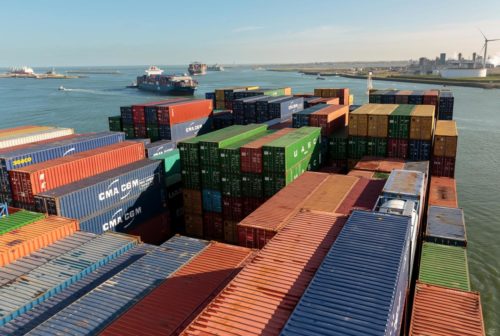
The steady climb to ever-higher rates for container shipping this year is showing signs of easing, at least temporarily.
On the busy Shanghai-to-Los Angeles trade route, the rate for a 40-foot container sank by almost $1,000 last week to $11,173, an 8.2% drop from the prior week that was the steepest weekly fall since March 2020, according to Drewry. Another gauge from Freightos, which includes premiums and surcharges, showed a nearly 11% plunge to $16,004, the fourth consecutive decline.
Ocean freight is still several times more expensive than it was pre-pandemic, and air cargo rates remain elevated too. So it’s anyone’s guess if these latest declines in global shipping costs mark the beginning of a plateau, a seasonal turn lower or the start of a steeper correction.
But investors are taking notice: Shares of the world’s container lines — from the biggest players like Maersk and Hapag-Lloyd to smaller competitors including Zim and Matson — have stumbled in recent days from record highs set in September.
Judah Levine, group head of research at Hong Kong-based Freightos, said the recent softness could reflect slower production in China during its Golden Week holiday combined with power restrictions in some regions.
“It’s possible some reduction in available supply is curbing container demand and freeing up some of the additional capacity that carriers have added during peak season,” he said. “It is also possible that — with ocean delays making it increasingly unlikely that shipments not already moving will make it in time for the holidays — the price drop also shows that the peak of peak season is behind us.”
What’s definitely not over yet is the logjam of ships outside the ports of Los Angeles and Long Beach, where 60 vessels were waiting for a berth to offload as of late Sunday. The average wait is now more than 11 days, compared with a high of about eight days back in April.